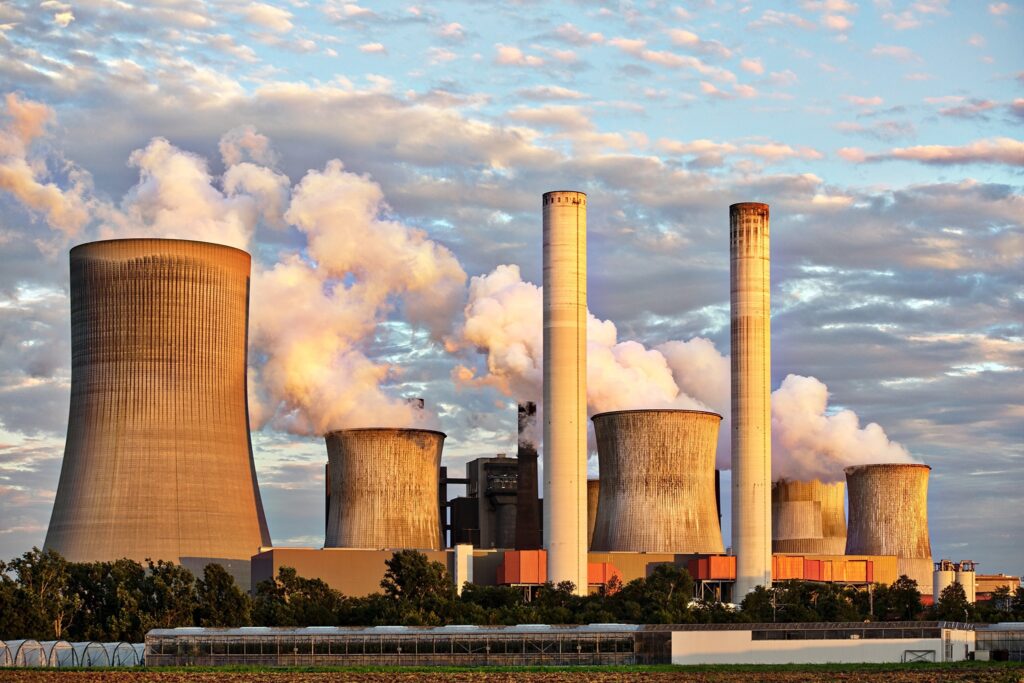Nuclear fusion is a powerful process that aims to replicate the energy-generating mechanism of the sun on Earth. It involves combining light atomic nuclei, such as isotopes of hydrogen, under high temperature and pressure conditions to form heavier nuclei, releasing an immense amount of energy in the process. This clean and sustainable energy source has the potential to revolutionize the world’s energy landscape by providing an almost limitless supply of electricity without harmful greenhouse gas emissions or long-lived radioactive waste. However, achieving practical nuclear fusion remains a significant scientific and engineering challenge, and ongoing research and development are essential to unlock its full potential as a viable and safe energy solution for the future.
Table of Contents

Introduction
“As our planet grapples with the pressing issues of climate change and the imperative for eco-friendly and sustainable energy solutions, the quest for alternative means of energy generation has grown significantly in importance.” One potential solution that holds great promise is nuclear fusion.
“In the following article, we will delve into the concept of nuclear fusion, its myriad potential advantages, and the journey towards realizing this environmentally friendly and secure energy source for the days to come.”
Nuclear fusion reaction?
Nuclear fusion, a remarkable phenomenon, entails the fusion of light atomic nuclei, resulting in the creation of a heavier nucleus and a remarkable release of energy. This captivating process mirrors the very essence of what fuels celestial bodies like the sun and distant stars. Diverging from nuclear fission, the process employed in existing commercial nuclear power plants, fusion distinguishes itself by abstaining from generating enduring radioactive waste and eliminating the looming threat of catastrophic meltdowns. It offers the potential for virtually limitless and sustainable energy production.

The Promise of nuclear fusion
The boundless possibilities presented by nuclear fusion are truly remarkable. Foremost among its advantages is the provision of an essentially limitless fuel source. Fusion reactions primarily rely on hydrogen isotopes like deuterium and tritium, which can be extracted from seawater, opening up a vast and sustainable reservoir. Secondly, fusion reactions produce no greenhouse gas emissions, helping to combat climate change. Additionally, the fuel for fusion reactions is not prone to price fluctuations like fossil fuels, making it a more stable energy source in the long term.
Overcoming Challenges
While the notion of nuclear fusion holds immense promise, it is not without substantial technical obstacles that must be conquered for it to become a practical and feasible energy solution. Among the foremost challenges lies the attainment and maintenance of the extraordinary conditions indispensable for fusion to take place, including the formidable requirements of high temperatures and pressures. Researchers are exploring different approaches, such as magnetic confinement and inertial confinement, to create these conditions and contain the plasma.
Products of nuclear fusion
Nuclear fusion offers several advantages over other forms of energy production.
First and foremost, nuclear fusion boasts a remarkable energy density surpassing that of fossil fuels. This implies that even a minute quantity of fuel has the potential to generate a substantial amount of energy. Secondly, fusion reactions produce minimal radioactive waste, which decays to safe levels within a few decades. Finally, fusion power plants would have a low risk of accidents and meltdowns, as the process is inherently safe and self-limiting.
The Roadmap to Commercialization
The path toward establishing nuclear fusion as a feasible commercial energy source is complex and multifaceted. At present, numerous international initiatives are actively engaged in constructing and operating experimental fusion reactors, with the notable ITER (International Thermonuclear Experimental Reactor) project standing out as a significant endeavor. These projects have the primary objective of showcasing the feasibility and scalability of fusion power. Once the technical challenges are overcome and a working prototype is achieved, the focus will shift toward building commercial fusion power plants.
Environmental Benefits
Nuclear fusion holds tremendous environmental advantages, particularly in addressing the pressing issue of climate change. Unlike other energy sources, fusion reactions emit no carbon dioxide or greenhouse gases into the atmosphere, thereby offering a substantial reduction in our global carbon footprint. Furthermore, fusion power plants do not produce hazardous air pollutants or particulate matter, which are major contributors to air pollution and respiratory health issues. By embracing nuclear fusion as a primary energy solution, we can diminish our dependence on fossil fuels and embark on a path toward a cleaner and more sustainable future.
Economic Implications
The development and commercialization of nuclear fusion technology have significant economic implications. While the initial investment and research costs may be substantial, the long-term benefits outweigh them. Fusion power plants have the potential to generate large amounts of electricity reliably and at a competitive cost. Furthermore, the fusion industry can create new job opportunities in various fields, from research and development to manufacturing and maintenance, stimulating economic growth and innovation.
Safety Considerations
Ensuring Safety remains of utmost importance in the realm of nuclear energy. Unlike nuclear fission, where inadequate management can result in catastrophic accidents, fusion reactions inherently possess a remarkable level of safety. The conditions required for fusion are extremely difficult to achieve and maintain, and any disruption would cause the reaction to stop. Fusion reactors cannot run away or undergo a meltdown. Safety is of utmost importance in the field of nuclear energy. Unlike nuclear fission, which can lead to devastating accidents if not properly controlled, fusion reactions naturally exhibit an exceptional degree of safety.
Public Perception and Education
To successfully integrate nuclear fusion into our energy landscape, public perception and education play a crucial role. Ensuring the provision of accurate and easily accessible information to the public regarding the benefits, safety measures, and progress in fusion research is paramount. By nurturing public comprehension and awareness, we can cultivate trust and garner support for the advancement of fusion technology as a practical and sustainable energy solution.
Policy and Regulation
The successful deployment of nuclear fusion requires the establishment of appropriate policies and regulations. Governments and regulatory bodies must work closely with the scientific community and industry stakeholders to develop frameworks that ensure safety, promote research and development, and facilitate the transition to fusion power. Clear guidelines for licensing, operation, and waste management need to be in place to guarantee the responsible and ethical implementation of fusion technology.
International Collaboration
Nuclear fusion research and development are highly collaborative efforts.
International collaboration and the exchange of knowledge, expertise, and resources are vital for expediting progress in this field. Collaborative projects such as ITER, which involves contributions from multiple countries, demonstrate the power of global cooperation in advancing fusion research. By pooling our collective efforts, we can overcome technical challenges more effectively and expedite the path to practical fusion power.

The Role of Governments and the Private Sector
Both governments and the private sector play pivotal roles in advancing nuclear fusion. Governments provide funding, support research initiatives, and create an enabling policy environment for fusion research and deployment.
Moreover, the private sector assumes a critical role by attracting investments, propelling technological innovation, and facilitating the transition from research to commercialization. Effective collaboration between governments and the private sector is vital for the achievement of fusion power.
The Potential of Nuclear Fusion
Nuclear fusion holds immense potential to revolutionize our energy landscape. With its virtually limitless fuel supply, minimal environmental impact, and inherent safety features, fusion can meet the world’s growing energy demands sustainably. With the continuous progress in research and development, we are steadily approaching the realization of the full potential of fusion power. This journey brings us closer to achieving a future that is not only cleaner and safer but also more prosperous.
Conclusion
In conclusion, nuclear fusion represents a cleaner and safer mode of energy for the future. The compelling aspect of nuclear fusion lies in its capacity to generate abundant energy without releasing harmful emissions or producing long-lived radioactive waste. This characteristic positions it as a promising solution to tackle the challenges posed by climate change and achieve energy sustainability. While there are technical hurdles to overcome and regulatory frameworks to establish, the progress being made in fusion research brings us closer to harnessing this transformative energy source. By investing in fusion technology, encouraging international collaboration, and raising public awareness, we can pave the path toward a brighter and more sustainable future.
FAQs
1. Is nuclear fusion a proven technology?
While nuclear fusion has not yet reached full commercialization, notable advancements have been achieved in research and the development of experimental reactors. Projects like ITER are working towards demonstrating the feasibility of fusion power. However, more development and testing are needed before fusion becomes a widespread energy source.
2. What is the projected timeline for the realization of nuclear fusion as a viable energy source?
The timeline for achieving practical fusion power is difficult to predict precisely. It requires overcoming complex technical challenges and scaling up from experimental reactors to commercial power plants. Estimates range from several decades to potentially within the next 50 years. Continued investment and research are crucial for accelerating the timeline.
3. What are the main challenges in achieving nuclear fusion?
The main challenges in achieving nuclear fusion include creating and sustaining the extreme conditions required for fusion reactions, developing efficient methods for plasma confinement, and finding suitable materials to withstand the intense conditions inside a fusion reactor. Dedicated scientists and engineers are actively engaged in addressing these challenges.
4. Will nuclear fusion completely replace other forms of energy?
While nuclear fusion has the potential to make a substantial contribution to our energy mix, it is unlikely to entirely replace other forms of energy. Fusion power will likely complement renewable energy sources like solar and wind, providing a stable and continuous baseload power supply.
5. How safe is nuclear fusion compared to nuclear fission?
Nuclear fusion is considered safer than nuclear fission. Fusion reactions do not produce long-lived radioactive waste, and there is no risk of a runaway reaction or meltdown. Fusion reactors shut down automatically in the event of any disruption. Safety measures and rigorous engineering designs ensure the safe operation of fusion power plants.
Get Access Now: https://bit.ly/J_Umma

